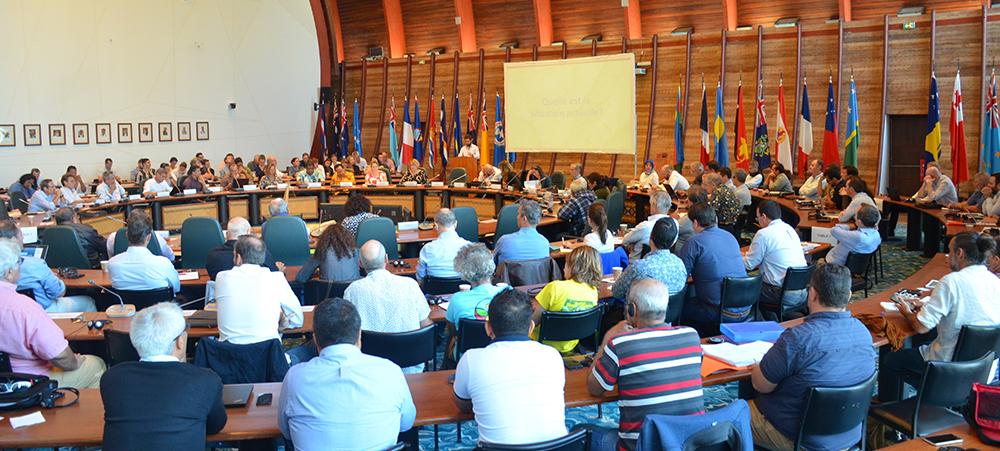Boosting Energy Transition
16 June 2021

The revision of New Caledonia's Energy Transition Plan was at the heart of the roundtable discussion organized by the government of New Caledonia's Energy Minister on Thursday, May 10, at the Pacific Community.
Five years after the adoption by the Congress of New Caledonia's energy transition plan (STENC), the time has come to update this framework document. This is an important time for New Caledonia to set its ambitions for the future. "We have no reason to be ashamed of the results of these first five years," said Christopher Gygès at the opening of the round table. Nevertheless, for the Minister in charge of Energy, "being satisfied with the strong development of solar photovoltaic would not be enough. "We must now go much further by making New Caledonia self-sufficient in terms of energy, thanks to a reliable, decarbonized, resilient and affordable energy," he said. Renewable energy and energy efficiency must be the pillars of New Caledonia's energy transition. "
A Green Nickel and Less CO2
STENC's goal is to achieve 100% renewable electricity generation for public distribution needs by 2030. The good pace of renewable energy development since 2019 will allow this goal to be reached as early as 2023. After the public distribution sector, the next challenge of energy transition will focus on the mining and metallurgical industries. It will be, in plain English, to "green the electricity mix in the nickel sector where a lot of work still needs to be done," summarized Christopher Gygès. The share of renewable energy in the consumption of these industries - currently zero - could be increased to 30%.
-70% Reduction in Greenhouse Gases
In its revised version, the STENC will also make the reduction of greenhouse gas emissions, particularly CO2, a key priority, with a target of around -70% compared to 2019, the reference year. "This reduction can be achieved by stopping the thermal power plants powered by oil and coal, and deploying renewable energy in the nickel sector while also transforming the fleet of road vehicles," proposed the member of the government. A target of 18,000 electric vehicles on the road by 2030 is envisaged.
Enriched by the conclusions of this round table, the roadmap proposed by the government will be the subject of a public consultation. It will be available online on the government website in the coming weeks. It will eventually end up on the desk of the Congress, which will have to decide on the ambitions of STENC 2.0.
* The Paris Agreement was adopted on December 12, 2015.
The European Union as a partner?
To meet these ambitious challenges, New Caledonia intends to rely on the next territorial envelope of the European Development Fund, endowed with 30 million Euros. In view of the signing of the financing agreement, scheduled for late 2021 or early 2022, New Caledonia has proposed to the European Union (EU) to designate energy transition as a priority sector for EU-New Caledonia cooperation. This choice is in line with the Paris Agreement*, whose scope includes New Caledonia, with the Green Pact for Europe, and "with the France Relance program", noted the representative of France at the round table. A combination of favorable factors that suggests that the planets are aligned for the revision of the STENC!
200 MW of renewable energy for Prony ressources
The three main representatives of New Caledonian's mining and metallurgy industry were among the guests at the round table and were keen to confirm their willingness to participate in New Caledonia's energy transition by promoting the use of more environmentally friendly energy. Prony Resources, which has committed to becoming CO2-free by 2040, took advantage of the meeting to announce, through its director Antonin Beurrier, the launch of an international consultation for the production of 200 MW by a solar farm. "This first step" towards the zero-carbon objective of the consortium of investors "will allow us to reduce our CO2 emissions by 50,000 tons," said Antonin Beurrier.
